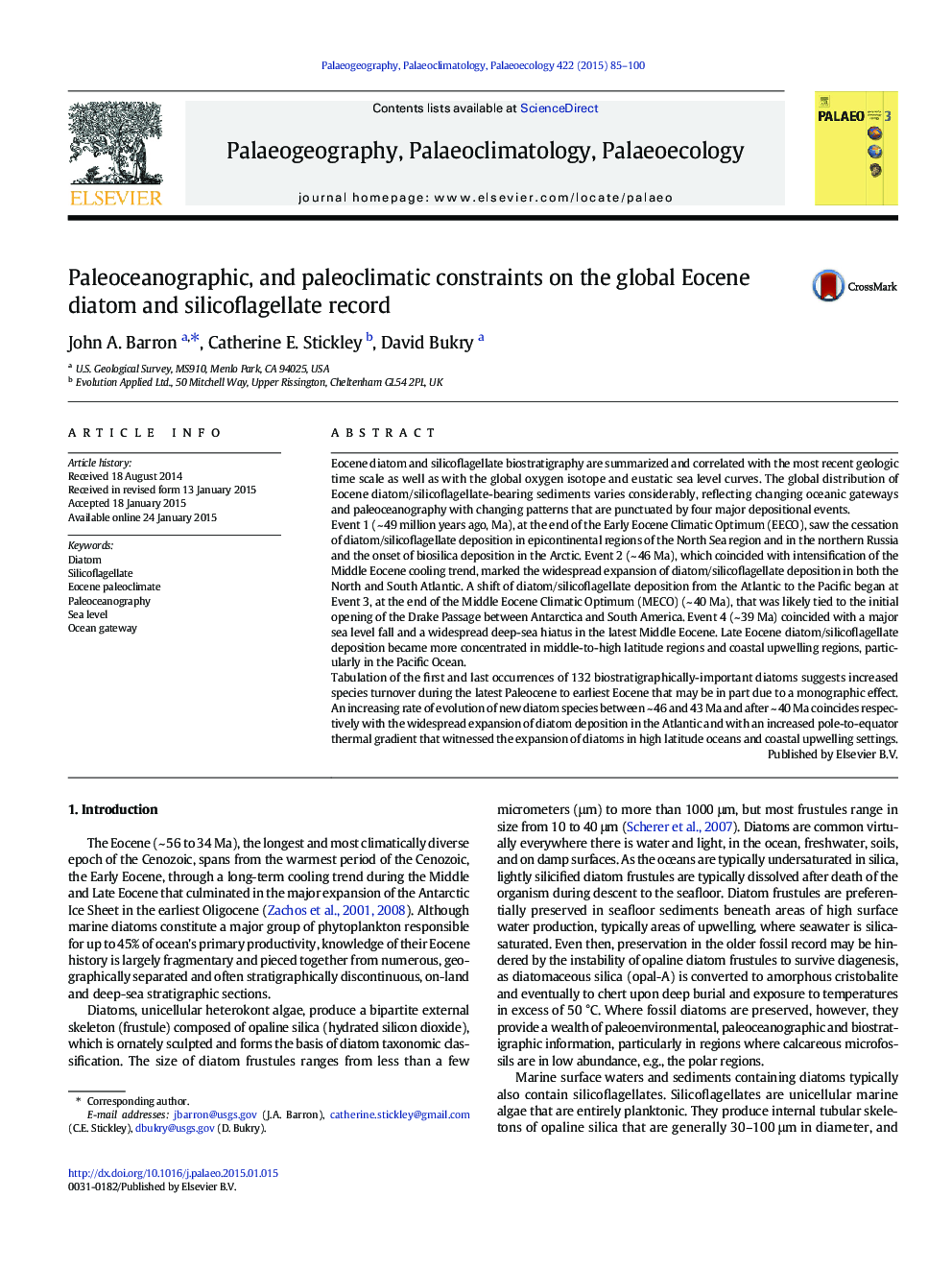| Article ID | Journal | Published Year | Pages | File Type |
|---|---|---|---|---|
| 4466022 | Palaeogeography, Palaeoclimatology, Palaeoecology | 2015 | 16 Pages |
•Eocene diatom and silicoflagellate biostratigraphy are updated and calibrated to 2012 geologic time scale.•Chronologic extent of key on land and deep-sea sections is compared with the Eocene oxygen isotope curve and sea level curve.•Four distinct events are identified when global diatom distribution changed – at ~ 49, 46, 40, and 39 million years ago.•Paleoceanographic causes of the events are proposed.•Marine diatom first and last occurrences are tabulated and compared with these events.
Eocene diatom and silicoflagellate biostratigraphy are summarized and correlated with the most recent geologic time scale as well as with the global oxygen isotope and eustatic sea level curves. The global distribution of Eocene diatom/silicoflagellate-bearing sediments varies considerably, reflecting changing oceanic gateways and paleoceanography with changing patterns that are punctuated by four major depositional events.Event 1 (~ 49 million years ago, Ma), at the end of the Early Eocene Climatic Optimum (EECO), saw the cessation of diatom/silicoflagellate deposition in epicontinental regions of the North Sea region and in the northern Russia and the onset of biosilica deposition in the Arctic. Event 2 (~ 46 Ma), which coincided with intensification of the Middle Eocene cooling trend, marked the widespread expansion of diatom/silicoflagellate deposition in both the North and South Atlantic. A shift of diatom/silicoflagellate deposition from the Atlantic to the Pacific began at Event 3, at the end of the Middle Eocene Climatic Optimum (MECO) (~ 40 Ma), that was likely tied to the initial opening of the Drake Passage between Antarctica and South America. Event 4 (~ 39 Ma) coincided with a major sea level fall and a widespread deep-sea hiatus in the latest Middle Eocene. Late Eocene diatom/silicoflagellate deposition became more concentrated in middle-to-high latitude regions and coastal upwelling regions, particularly in the Pacific Ocean.Tabulation of the first and last occurrences of 132 biostratigraphically-important diatoms suggests increased species turnover during the latest Paleocene to earliest Eocene that may be in part due to a monographic effect. An increasing rate of evolution of new diatom species between ~ 46 and 43 Ma and after ~ 40 Ma coincides respectively with the widespread expansion of diatom deposition in the Atlantic and with an increased pole-to-equator thermal gradient that witnessed the expansion of diatoms in high latitude oceans and coastal upwelling settings.
